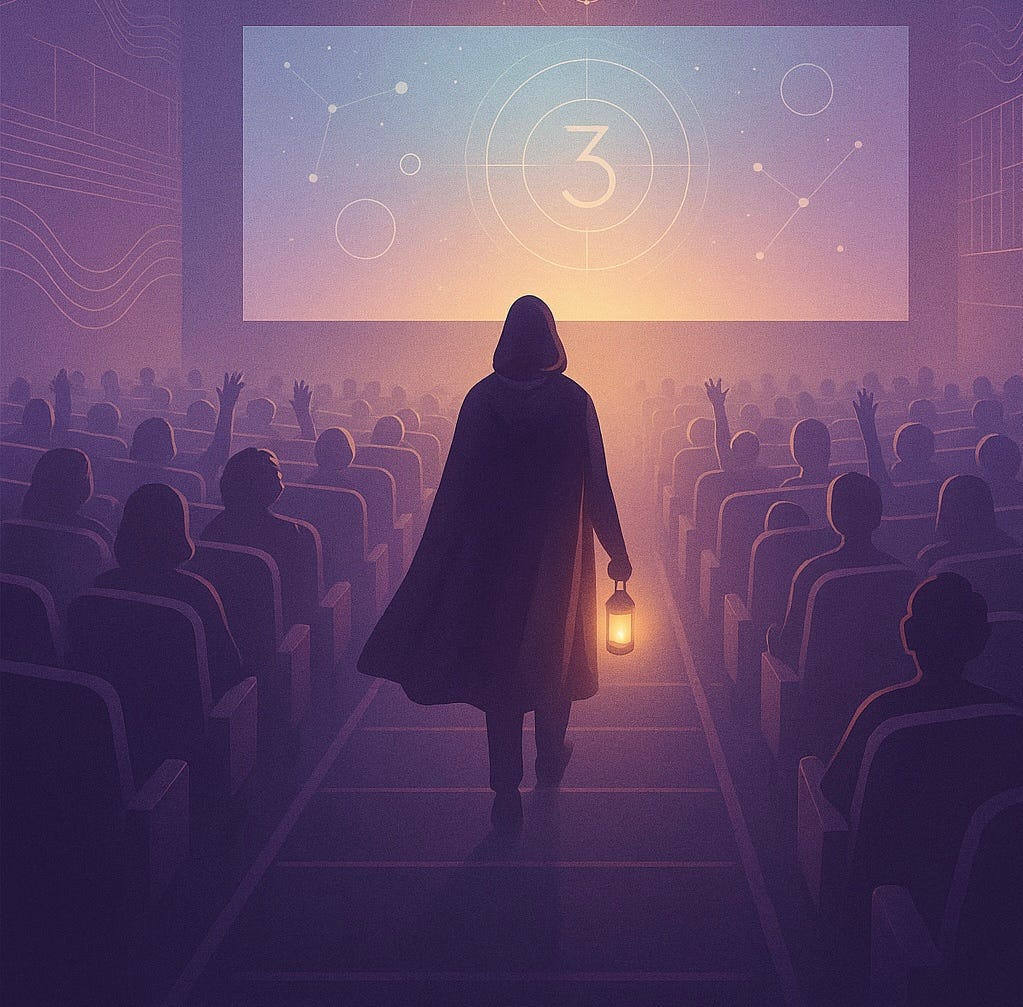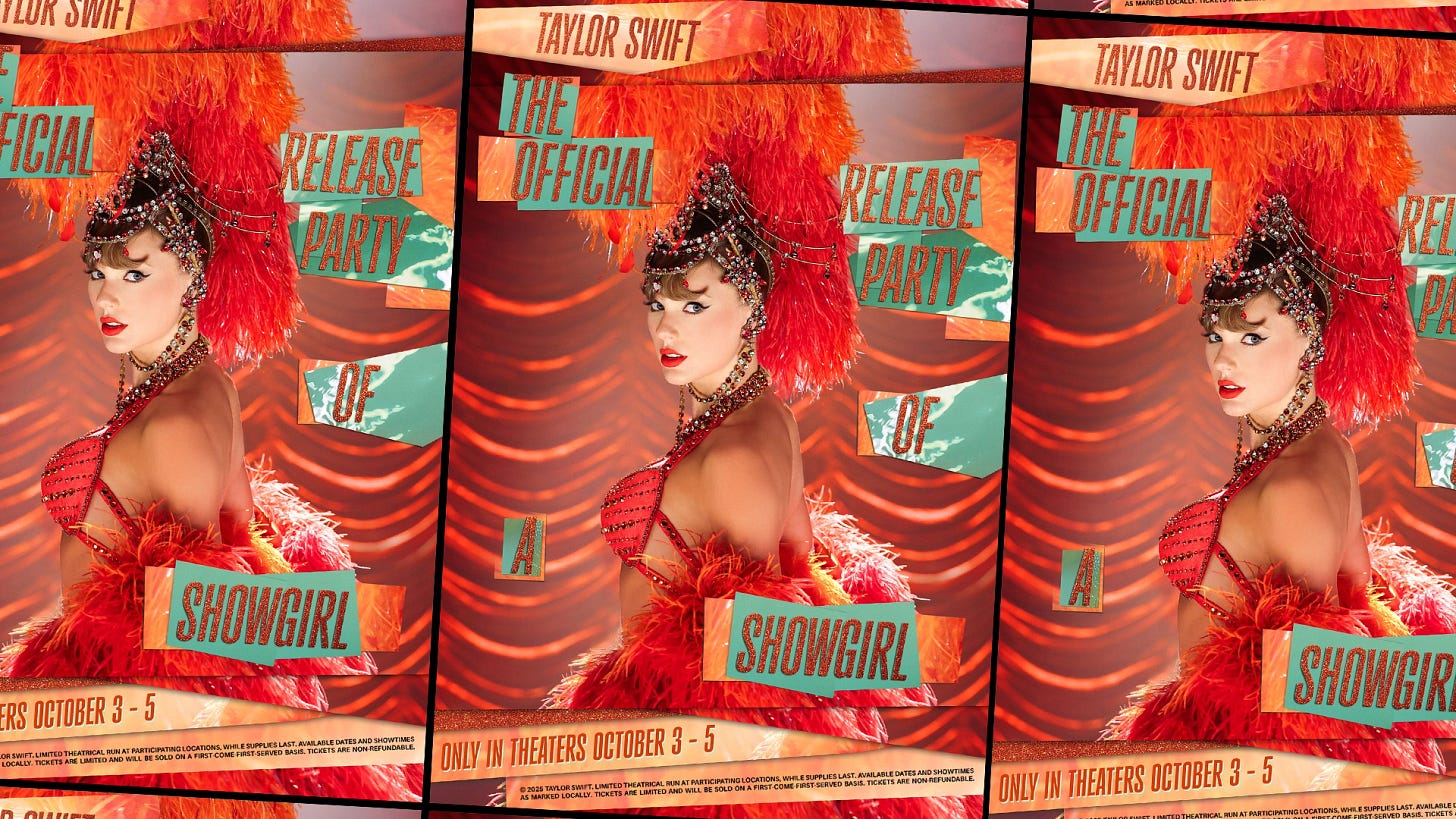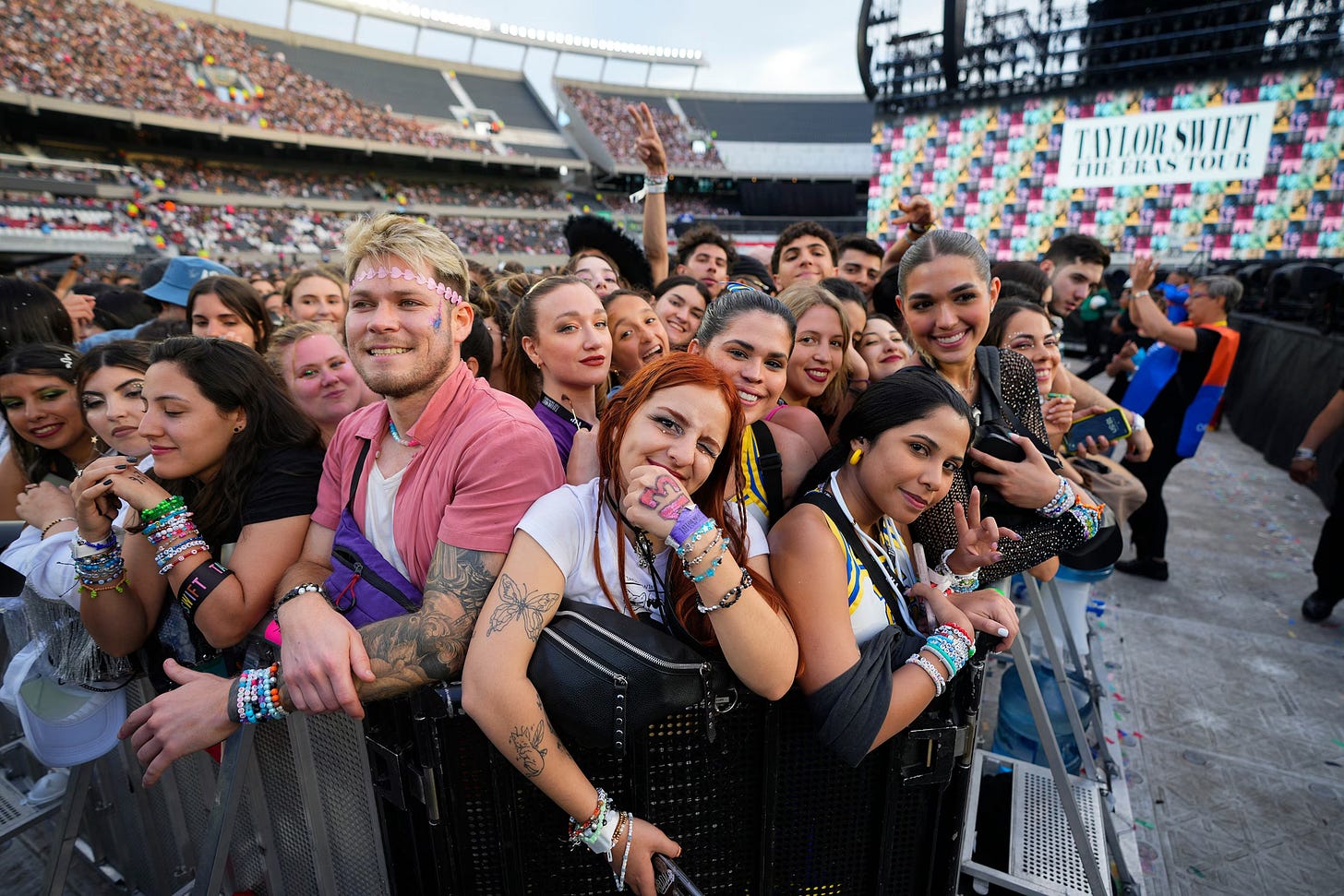What Taylor Swift’s Media Strategy Teaches Us About Experience Design
Human Patterns in the Machine Age | Issue #35
This past Friday evening, I found myself in a packed movie theater with my family, surrounded by friendship bracelets, glitter, and different generations of Taylor Swift fans. We were there for the limited theatrical release of The Official Release Party of a Showgirl. It was not a concert film, not quite a documentary, but something entirely new.
I was curious but didn’t know quite what to expect. Over the past few years, we’ve seen a fascinating shift: concerts, operas, sporting events, and now album releases are finding their way into movie theaters.
Beyond what we think of as traditional films, these are hybrid experiences that blur the lines between live events, digital media, and cinema. As someone who thinks deeply about how people experience things, I couldn’t help but wonder: what does it mean when we start consuming live events and other media in these new ways?
What unfolded over those next 89 minutes was a case study in customer experience design. Taylor Swift hasn’t just adapted to changing media consumption, but she’s invented an entirely new category.
Her approach prompted some thought for me and offers sophisticated lessons that extend beyond just the entertainment industry. Swift’s genius lies in understanding that in today’s attention economy, the experience surrounding a product matters as much as the product itself. She’s not just selling albums. She’s architecting multi-dimensional experiences that transform passive consumers into active participants and loyal community members.
Anticipation as Architecture
Where most artists simply announce and release, Swift builds. Her strategic use of “Easter eggs”, i.e. hidden clues embedded across social media posts, music videos, and public appearances turns every release into an ongoing treasure hunt.
Fans don’t just wait for new content, they actively decode it, discuss theories in online communities, and piece together narrative puzzles. It’s deliberate experience design that extends engagement far beyond the traditional product cycle.
For her The Life of a Showgirl album release, a simple countdown timer on her website created urgency and exclusivity around what could have been just another digital drop. By manufacturing scarcity and anticipation, she transforms a commodity into an event.
The lesson for brands: anticipation itself is a product. A well-designed “drip” content strategy where information is released strategically over time can generate more sustained engagement than any single big reveal. Swift’s message consistency across platforms rewards fans for following multiple channels, creating a unified story that feels both epic and intimate.
Community as Currency
Perhaps Swift’s most innovative move has been repositioning consumption of her music as a communal ritual. Her concert films don’t just document performances, they transform movie theaters into gathering spaces where fans sing, dance, dress up, and exchange friendship bracelets. Research has shown that attendees experience collective effervescence, a social phenomenon where individual identity merges with group experience.
This community-centric approach does something most brands struggle to achieve: it makes fans emotionally invested not just in the product, but in each other. By encouraging fan-made content and explicitly inviting participation, Swift turns consumers into collaborators. The experience becomes co-created, not dictated from above.
The cinema release of her Eras Tour was also a brilliant accessibility play. By offering a high-quality, lower-cost alternative to live concerts, she dramatically expanded her community without diluting value for existing superfans. This inclusive strategy acknowledges that community building requires lowering barriers to entry while maintaining experience quality.
For brands, this suggests a fundamental shift from transactional relationships to relational communities. The question isn’t just “Will they buy?” but “Will they feel like they belong?”
Authenticity Through Curation
Swift’s parasocial relationship with fans feels intimate despite operating at global scale. She achieves this through carefully curated authenticity, behind-the-scenes footage, personal commentary, and selective vulnerability about struggles and growth.
The Showgirl release party film included some backstage moments and Swift’s own reflections, giving fans the feeling of insider access. It’s a bit of intimacy that’s strategic. By sharing the process alongside the polished product, she builds trust and makes her artistic journey feel like a shared experience rather than a commercial transaction.
This leveraging of vulnerability is powerful. When Swift discusses personal challenges or creative struggles, fans don’t see a distant celebrity in high echelons of society.
They see someone they can relate to and root for. The narrative arc of her career becomes a story fans experience with her, not just something they observe.
Blueprint for Better Experiences
As I reflect on Taylor Swift’s strategy I see 5 concrete lessons for any organization seeking deeper customer engagement:
Design for participation, not just consumption: Create opportunities for customers to actively engage with your brand story, not just passively receive it.
Build community infrastructure: Invest in phygital spaces (physical and digital) where your customers can connect with each other, not just with you.
Tell coherent stories across touchpoints: Every customer interaction should feel like part of a larger narrative, not a disconnected transaction.
Make anticipation part of the experience: Strategic reveals and layered storytelling can extend engagement far beyond individual product launches.
Curate authenticity strategically: Share process and vulnerability alongside polish, but always with intentionality about what serves the relationship.
The Human Connection Imperative
What makes Swift’s approach particularly noteworthy is how it centers human connection in an increasingly automated world. While AI and algorithmic marketing promise efficiency and scale, Swift demonstrates that deep engagement still requires storytelling, community, and emotional resonance. Fundamentally human experiences that technology alone cannot replicate.
Her success suggests that brands that win won’t necessarily be ones with the most sophisticated algorithms, but those that understand how to architect meaningful human experiences at scale. This is where I believe the future of CX lies. Not replacing human connection with automation, but facilitating it and deepening it.
When we can automate nearly everything, the experiences that matter most are still the ones that make us feel something. They connect us to others, and invite us into stories larger than ourselves. Swift’s media strategy reminds us that at the heart of every great customer experience is a truth we sometimes forget: people don’t just want products—they want to belong to something meaningful.
🙏 Thank you for reading Strategic Humanist. If you enjoyed this article, consider subscribing for future articles delivered straight to your inbox. Or share the article with others who may find it valuable.
🤔 Curious about the Strategic Humanist?
I’m a lead CX strategist that helps Fortune 500 companies craft customer-focused solutions that balance business priorities, human needs, and ethical technology standards. My work focuses on keeping humans at the center while helping organizations navigate digital transformation.
Connect with me on LinkedIn to explore more insights on human-machine collaboration, customer experience, and ethical applications of AI.




